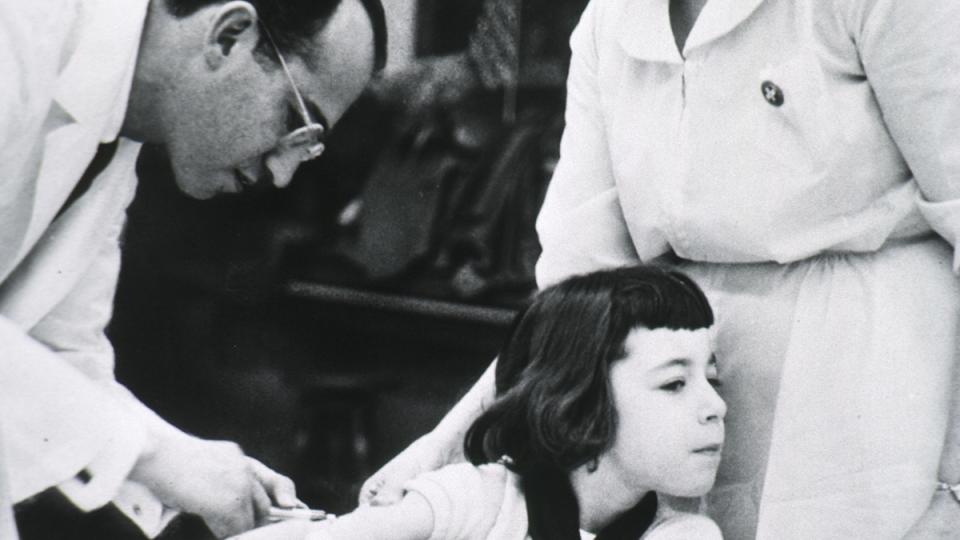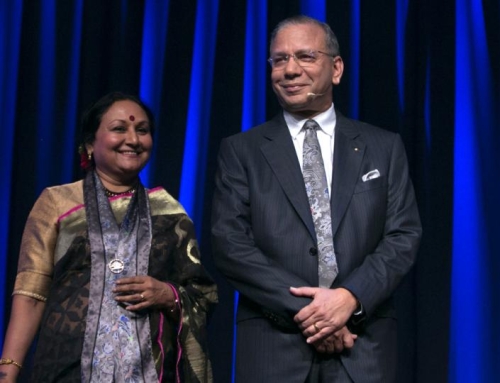Sunday, 12 April, marks 60 years since the Salk polio vaccine was declared safe, effective, and potent. In that time, the number of polio cases has dropped by 99 percent worldwide. With just three countries remaining polio-endemic, we are closer than ever to eradicating this crippling disease.
Jonas Salk’s inactivated polio vaccine (IPV) has been crucial in helping us reach our goal of a polio-free world. Before the vaccine was widely available, in the United States alone, polio crippled more than 35,000 people each year. By 1957 — two years after the introduction of Salk’s vaccine — cases in the U.S. had fallen by almost 90 percent, and by 1979, polio had been eradicated there.
The impact on the rest of the world has taken longer. In 1988, when Rotary International launched the Global Polio Eradication Initiative (GPEI) with its partners at the World Health Organization, UNICEF, and the U.S. Centers for Disease Control and Prevention, polio continued to cripple children in 125 countries. Today, polio remains endemic in only three: Afghanistan, Nigeria, and Pakistan. And it has been more than eight months since Nigeria’s last case, making a polio-free Africa a real possibility.
Salk’s vaccine will play an important role in the end-game strategy against polio when 120 countries introduce IPV into their routine polio immunization systems this year. Leading that effort are the GPEI partners and Gavi, a global vaccine alliance, along with Sanofi Pasteur, the largest manufacturer of polio vaccine.
“As more than 120 countries in the world are introducing IPV, we are beginning the last chapter on polio eradication,” said Olivier Charmeil, Sanofi Pasteur’s chief executive officer. “At Sanofi Pasteur, we have had a long-term vision of IPV as the ultimate public health tool able to finish the job started with Oral Polio Vaccine (OPV).”
By Maureen Vaught
Rotary News
10-Apr-2015


